The Blue Clays of Wallhouse
Brickworks at Broompark, Wallhouse, and Avoncrook
F20026 - first published 17th July 2020
Agricultural improvements during the first half of the 19th century brought demand for large quantities of clay pipes and tiles to drain waterlogged soils, and clay pantiles to roof new farm buildings. Small brick and tile works were set up in various rural parts of West Lothian where suitable clay was available, and a supply of coal was at hand to fuel kilns.
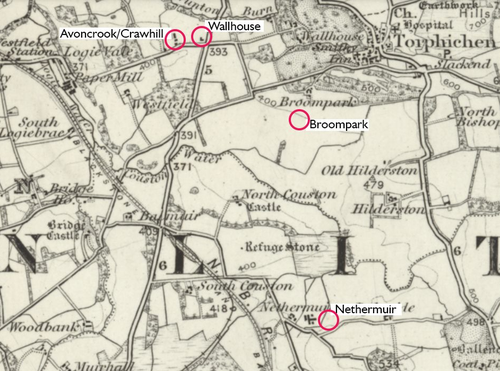
The fields to the north east of Bathgate hide great depths of sediments left behind by melting glaciers, including reserves of sticky blue clay particularly suited for tile-making. The first edition OS map, surveyed in the 1850's, show two brick and tile works operating in the lands of Andrew Gillon's Wallhouse estate in the parish of Torphichen.
Broompark works, located south of Broompark farm about half a mile west of Torphichen, were described as “a large brick and tile work, consisting of 3 long sheds for drying the bricks etc and two large kilns for burning them; a steam engine of 10 horse power is used in the manufacturing the bricks etc; the clay pits are to the west of the sheds and a small iron tramway runs to them, by which the clay is conveyed to the shed where it is converted into the tile etc; About 16 hands, male and female, are constantly employed”
Wallhouse works lay a little further to the west, close to the site of the present-day Westfield roundabout, was described as a “small brick & tile works ½ mile W. of Wall House mansion from which it takes its name, It consists of two sheds at right angles for drying the bricks etc. and two small kilns for burning them, the clay pits are on the W. of the sheds to which runs a small wooden tramway for conveying the tiles etc as they are made, to the kilns - There is a neat one story cottage S. of the works which is the residence of Mr Alexander the Owner,”
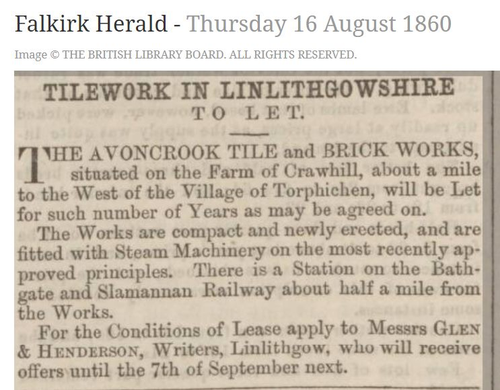
Both works were operated by John Alexander, who also was proprietor of the Nethermuir tile works (near the Couston water, close to Bathgate town council's “sewage meadows”) and a works at “Cowdenhill, Blairdarty” to the west of Glasgow.
The Broompark brick and tilework seems to have been a fair scale operation for its time. There are references to Broompark bricks being used for building miners rows in Armadale, and the purchase, in 1860, of a new clay mill made by the Bathgate Foundry company. It is perhaps this piece of machinery that, in 1865, caused terrible injury to one of the many women and girls employed at the works. Newspapers reported that “a girl, named Catherine daughter of a miner residing in Engine Lane, Bathgate, while in her usual employment in Mr Alexander’s Brick and Tile Works, Broompark, had one of her arms frightfully mutilated in the machinery in the clay mill and may render amputation of the limb once necessary.
By the 1890's the Broompark brick and tile works were described as “in ruins”, and rather surprisingly, the 1895 OS maps show no trace that suggest there ever was a brickworks on the site. Today the site of the brickworks site and claypits is clearly defined by a waterlogged area of reeds.
The smaller Wallhouse brick and tile works had a shorter life, and seems to have been abandoned in the mid 1860's. The works cottage (Wallhouse Muir cottage), and traces of the clay pit, survived into the 1980's when obliterated by construction of the approach road to the (still to be constructed!) Avon Gorge bridge.
In 1858, Henry Cadell, the Bo'ness coalmaster, purchased the Crawhill estate, neighbouring the lands of Wallhouse. It seeems that the industrialist was quick to exploit the mineral opportunties of the estate, and constructed the Avoncrook tile works, on a site just a couple of hundred yards to the west of the Wallhouse tile works. When offered for let in 1860 it was stated that “the works are compact and newly erected, and are fitted with steam machinery on the most recently approved principles”. Robert Neil is recorded as an early tenant. An advertisment from 1875 offering lease of the works, provides many further details. The works had a “steam engine of 8-horse power, West's pugging and tilemaking machine, kiln, sheds, saw bench driven by engine power, dwelling-house, garden, and workmen's cottages. There is an ample field of clay in about six acres of land set apart from the work. Following this advertisment, the works were taken on by John, Thomas and William Alexander ,and seems to have remained in operation into the 1880's, being sometimes referred to Crawhill tile works. The workmen's cottages, perhaps built from from bricks made on site, still survive as Crawhill cottages. To their rear, a pond marks the site of a claypit.
Clay tiles continued to be made at the Alexander's Nethermuir tileworks near Bathgate into the 1940's, but that's another story.
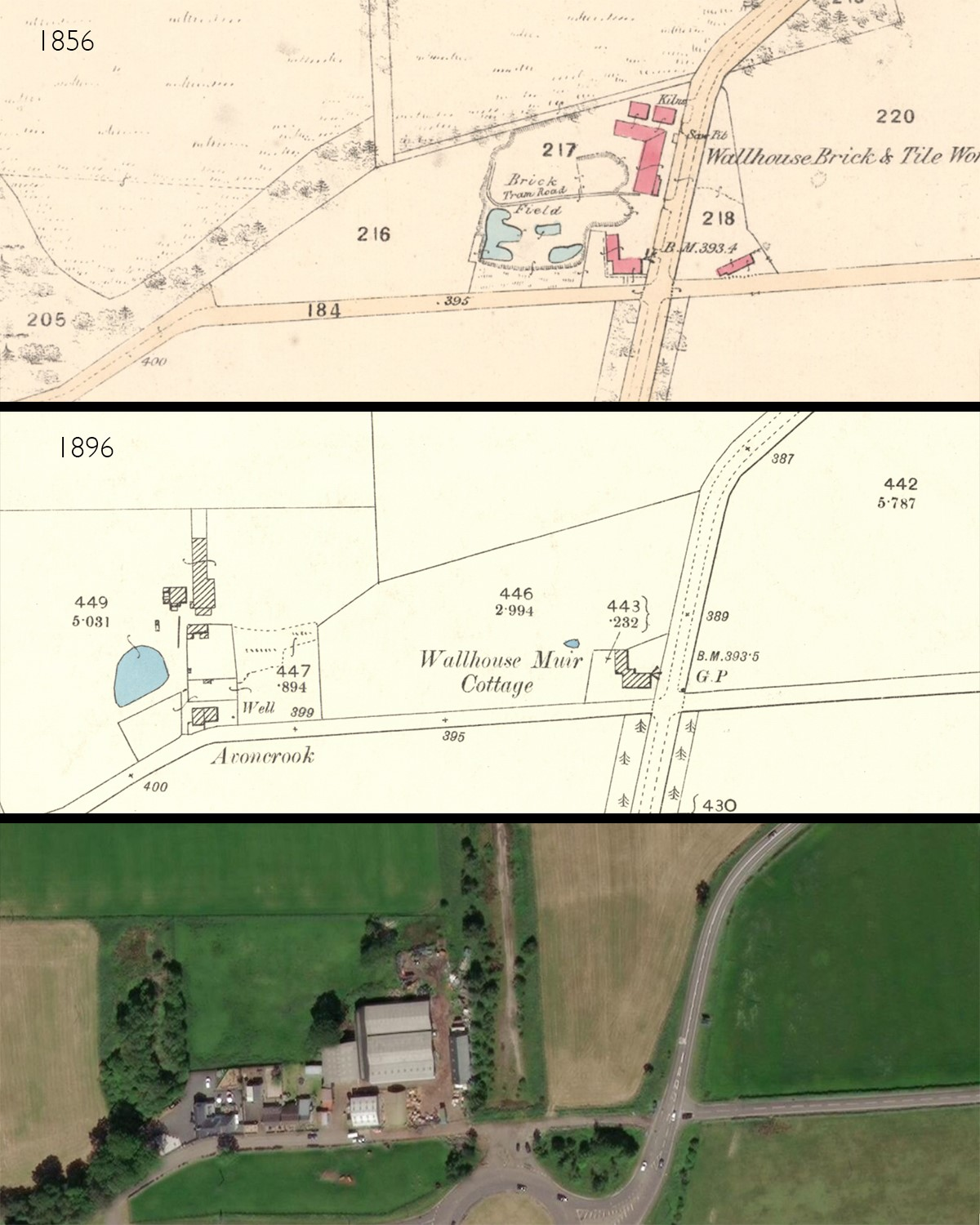
OS 25" map c.1855 showing Wallhouse works, and c.1895 map show works (perhaps disused) at Avoncrook/Crawhill
Maps courtesy of National Library of Scotland
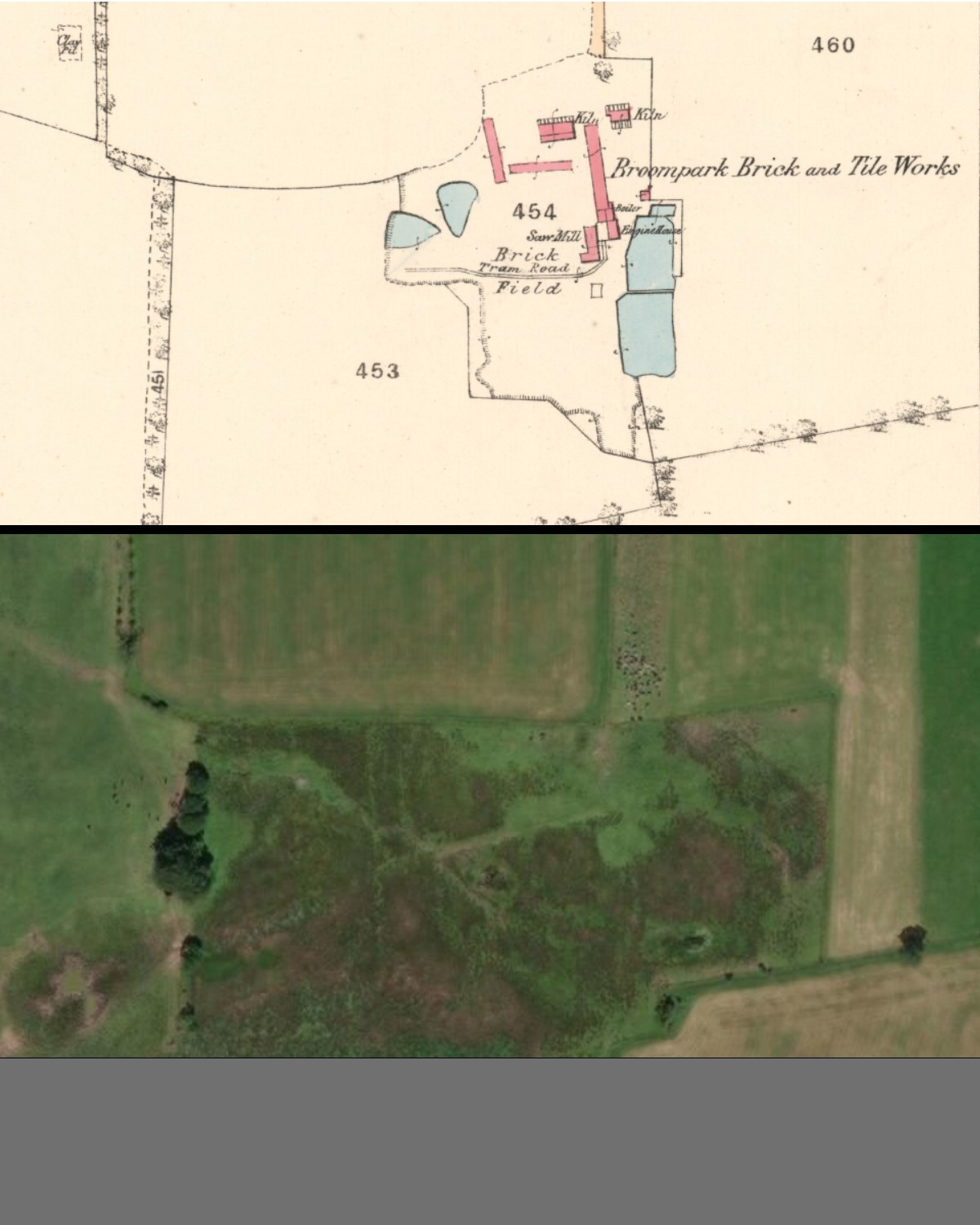
Broomhill brick and tile works. Map images courtesy National Library of Scotland. Evidence on site suggests that clay working extended considerably further west than shown on the 1855 map.
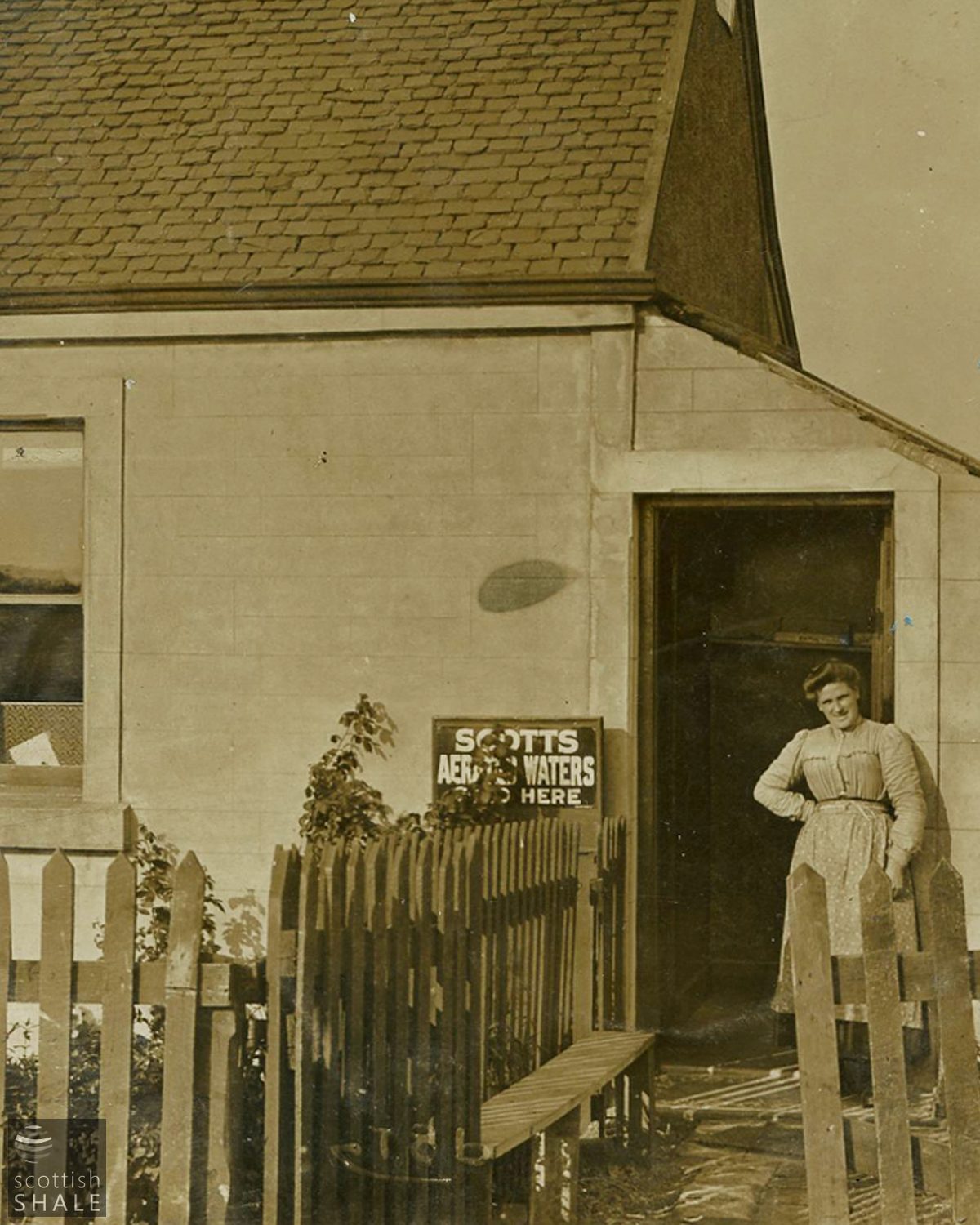
Avoncrook cottage ? See full record LVSAV2021.120
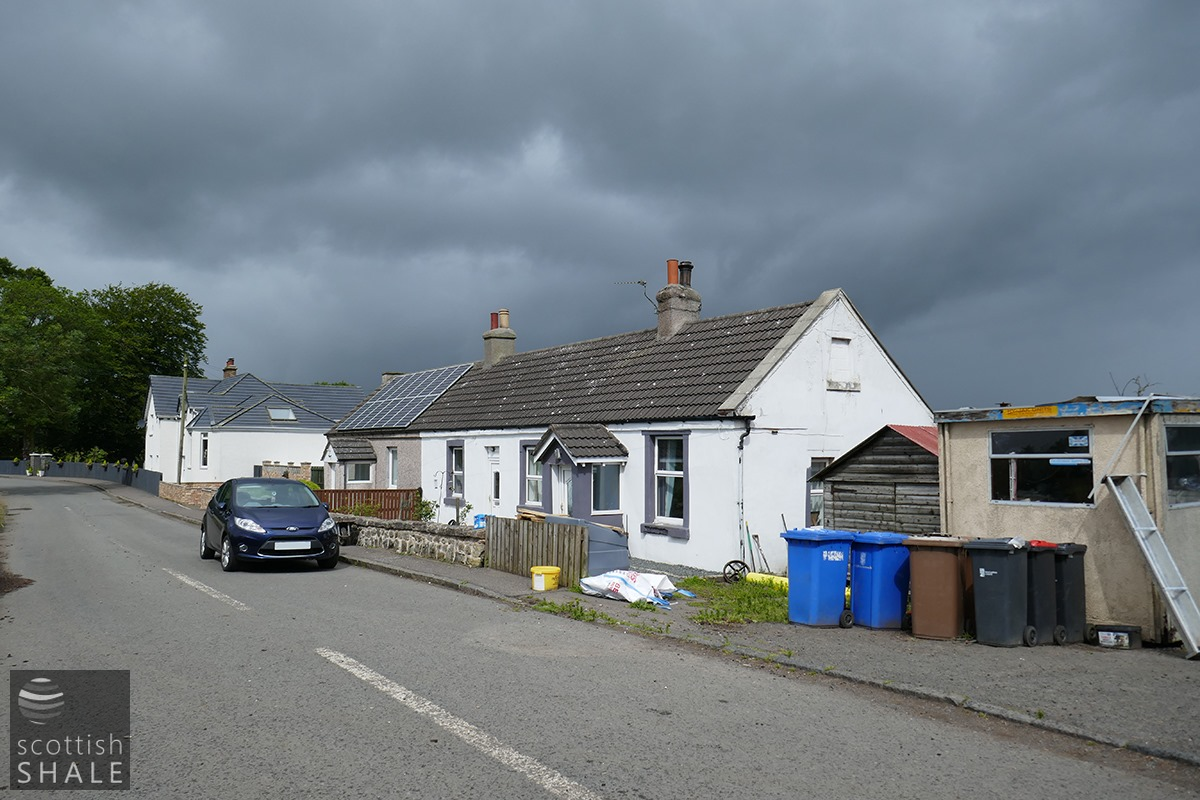
Avoncrook or Crawhill cottages, presumingly built to house workers at the Avoncrook tile works.
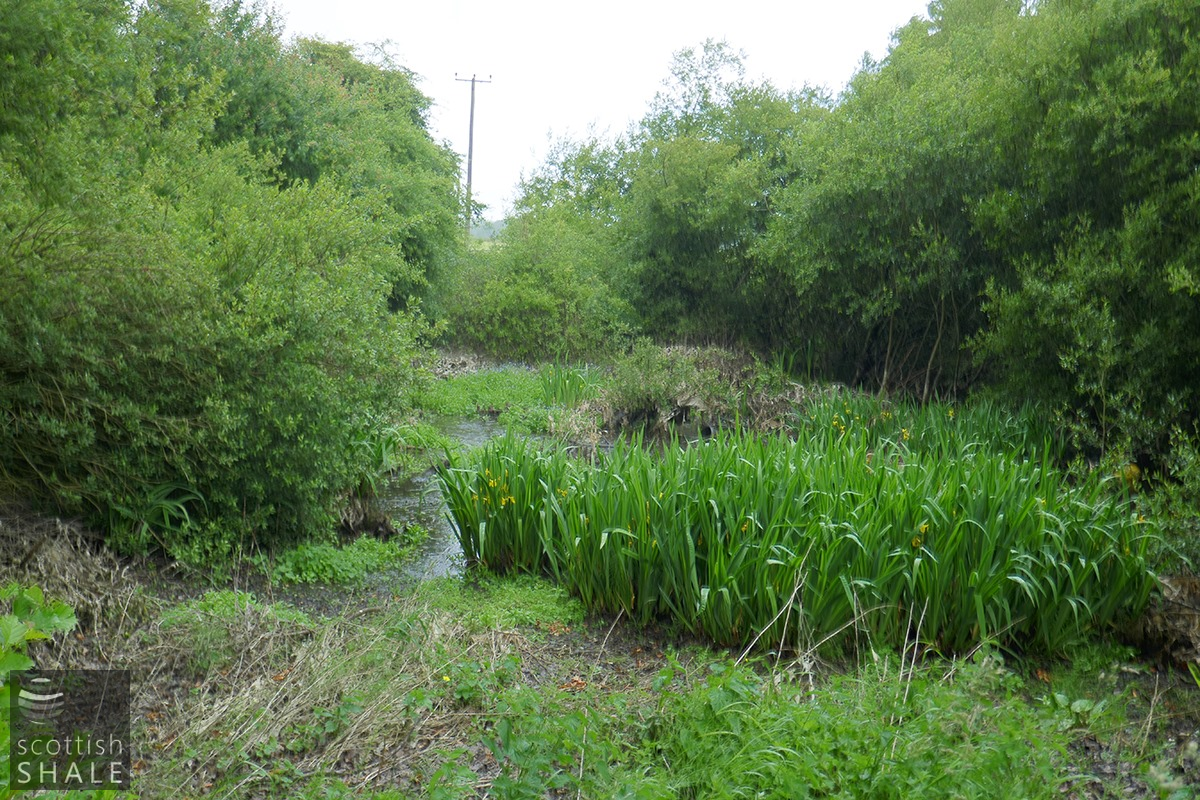
The old clay pit serving Avoncrook/Crawhill tile and brick works.
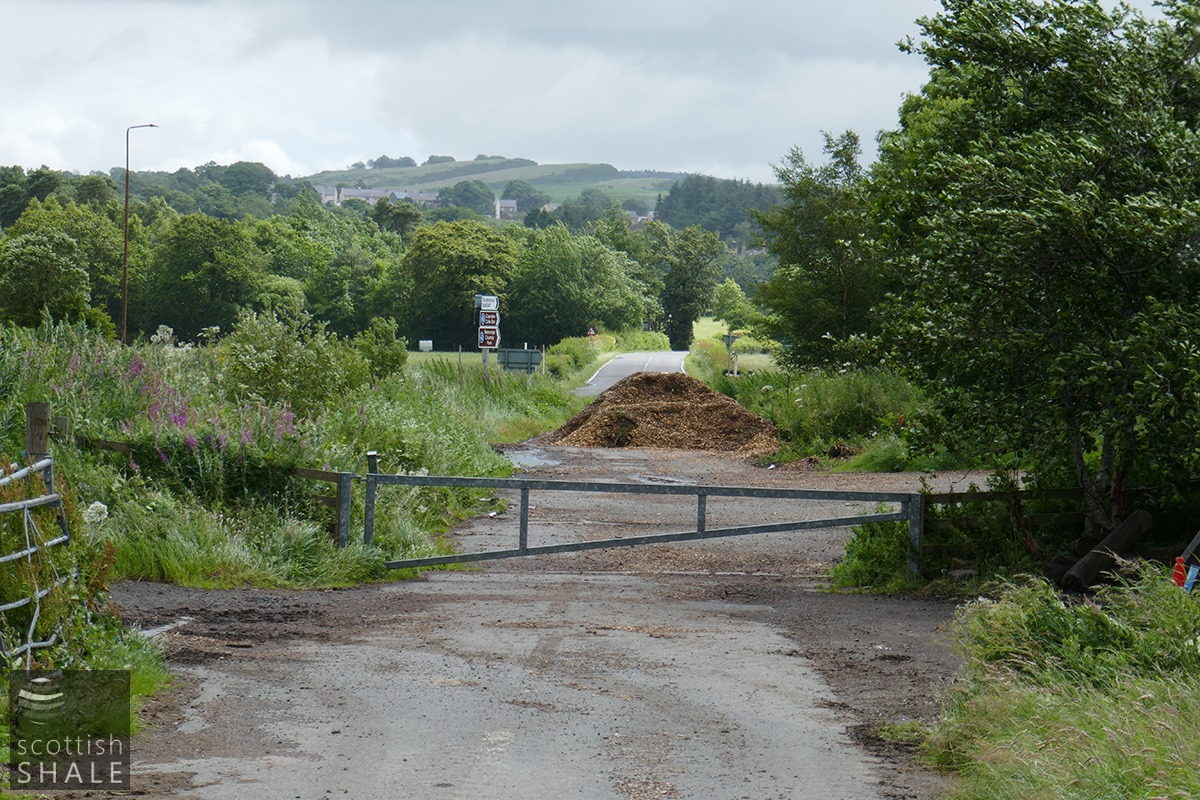
The old road to Torphichen. Wallhouse tile works were on the left side of this road.
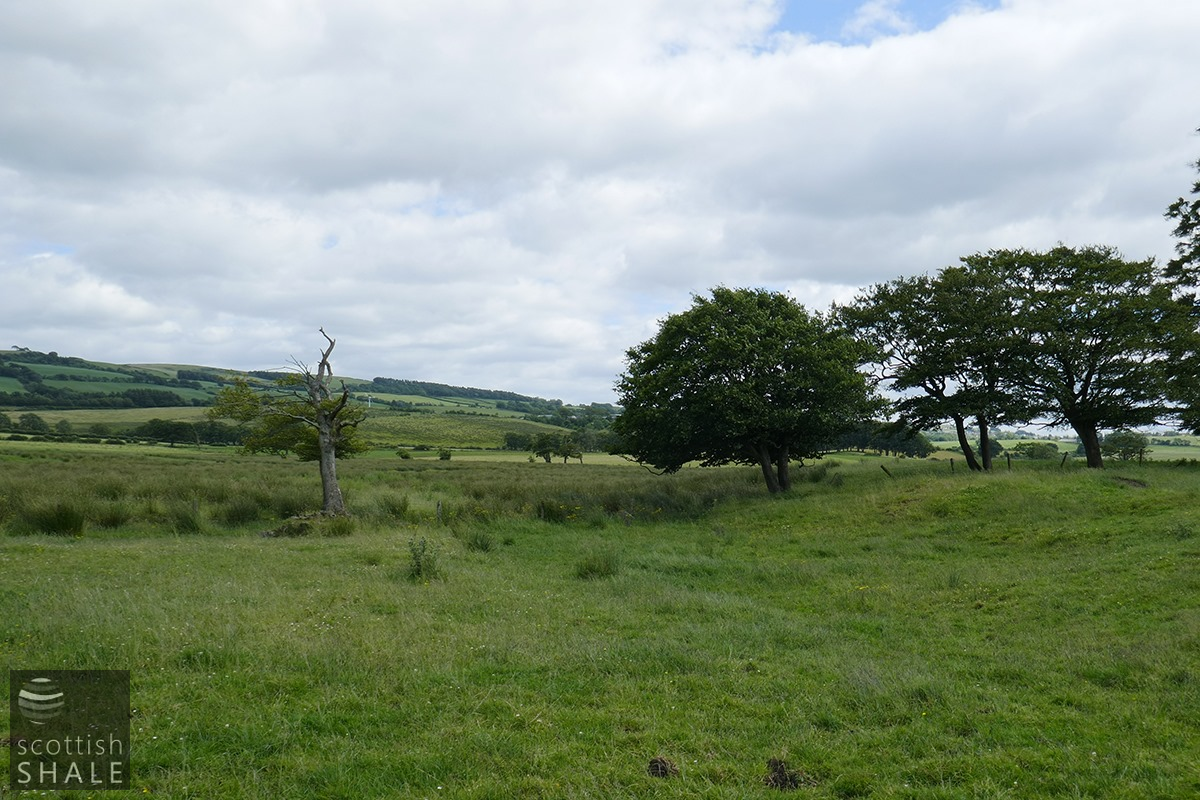
Claypit area of the Broompark tile works, looking towards the Bathgate hills.
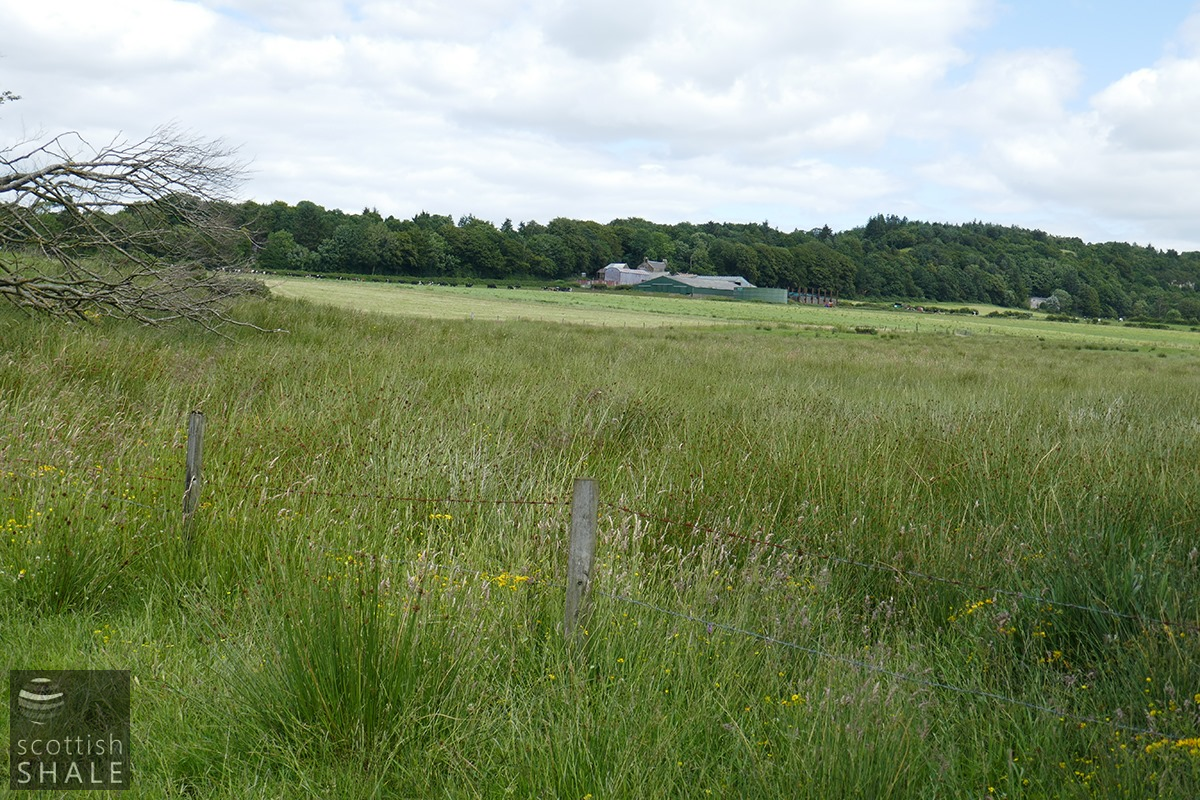
Wet ground and reeds mark the site of Broompark tile and brick works - looking towards Broompark farm
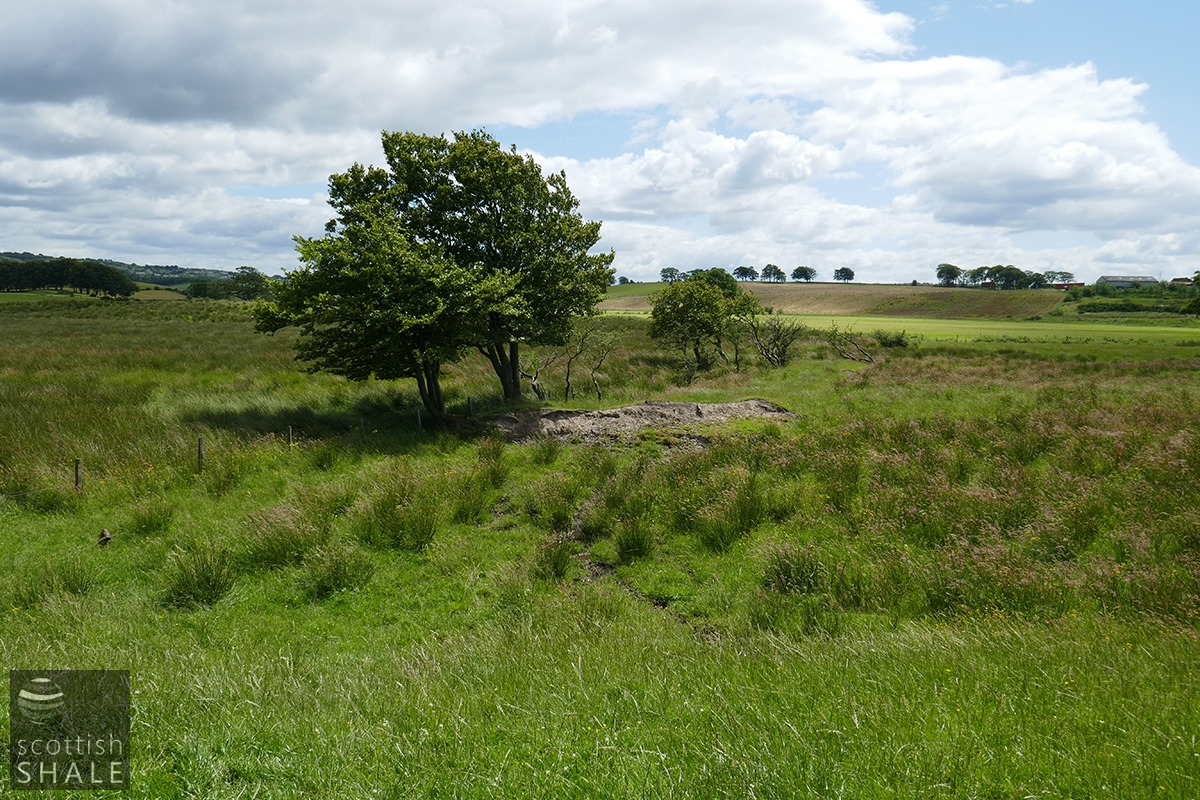
Site of Broompark tile and brick works